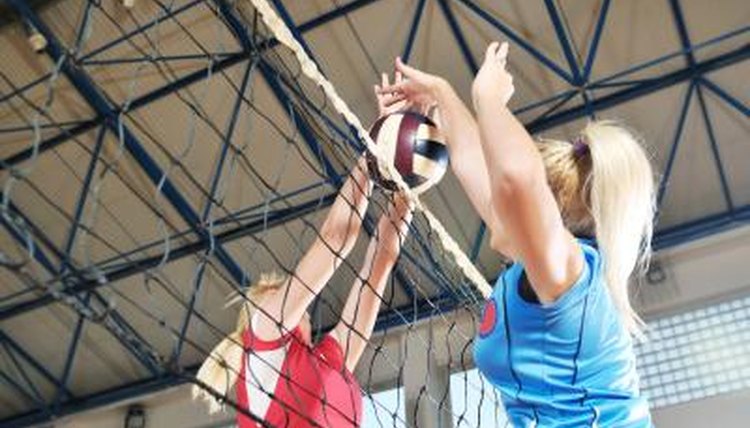Joints & Muscles Used in Volleyball

Even if you don't play volleyball competitively, casual play in the backyard or on a beach requires athleticism. Jumping and running, as well as serving and spiking the ball, all require strong muscles and flexible joints. If you want to concentrate on building your volleyball muscles and on stretching to improve flexibility in the necessary joints, you'll benefit from a program that focuses on full-body flexibility and strength.
Lower Body Joints
You'll do a lot of running and jumping during a game of volleyball. Flexible ankles help you to pivot and turn quickly without incurring an injury. Running also requires flexible and limber hips, knees and ankle joints to pick up your legs and put them down where you want them. When you crouch down to explode upward and spike the ball, those same lower body joints are called into action.
Upper Body Joints
All the interaction with the volleyball itself requires some movement from your shoulder joint, whether you're serving, setting, passing or spiking it. Your elbow joints lock or bend depending on which way you're trying to hit the ball. The wrist joints play a part, too, flexing or bracing to serve, receive a serve, pass the ball to a team member or block a spike.
Leg Muscles
Your leg muscles are your foundation when you play volleyball. You'll recruit all of them at one point or another during the game. Your calves, quadriceps, hamstrings, glutes and hip flexors are all essential for running, but they also play a vital part in quick, explosive jumps. Strong leg muscles give you the power you need to elevate your jumps for effective jump serves, setting, spiking and blocking.
Upper Body Muscles
Your upper body is where a lot of essential volleyball action happens. Your biceps and forearms engage to move your arms during any ball-hitting action like the serve or receiving, setting, passing and spiking. Your chest engages during forceful forward and upward arm movements. With the full range of motion your arms go through in a game, the fact that you engage your shoulder muscles is no surprise. They even work with your back muscles to keep your arms from moving back when blocking a ball. Strong back muscles, such as the scapular stabilizers around your shoulder blades, help with arm movement and stabilization, and the latissimus dorsi muscles, which run down your back from just below the shoulder blades to your waist, are useful for stabilizing in addition to moving your upper body.
References
Writer Bio
Elle Di Jensen has been a writer and editor since 1990. She began working in the fitness industry in 1987, and her experience includes editing and publishing a workout manual. She has an extended family of pets, including special needs animals. Jensen attended Idaho and Boise State Universities. Her work has appeared in various print and online publications.
